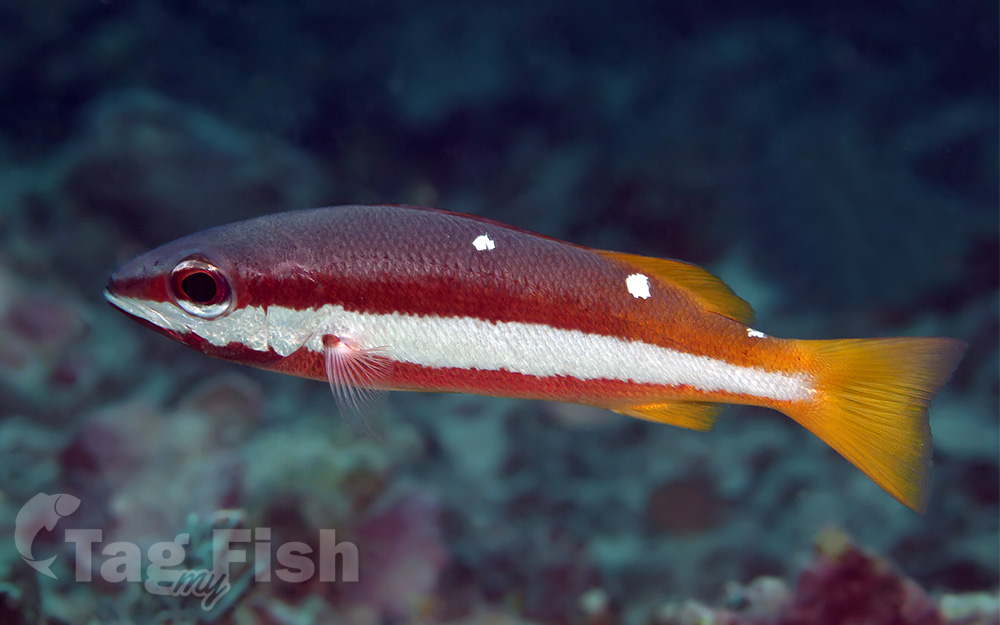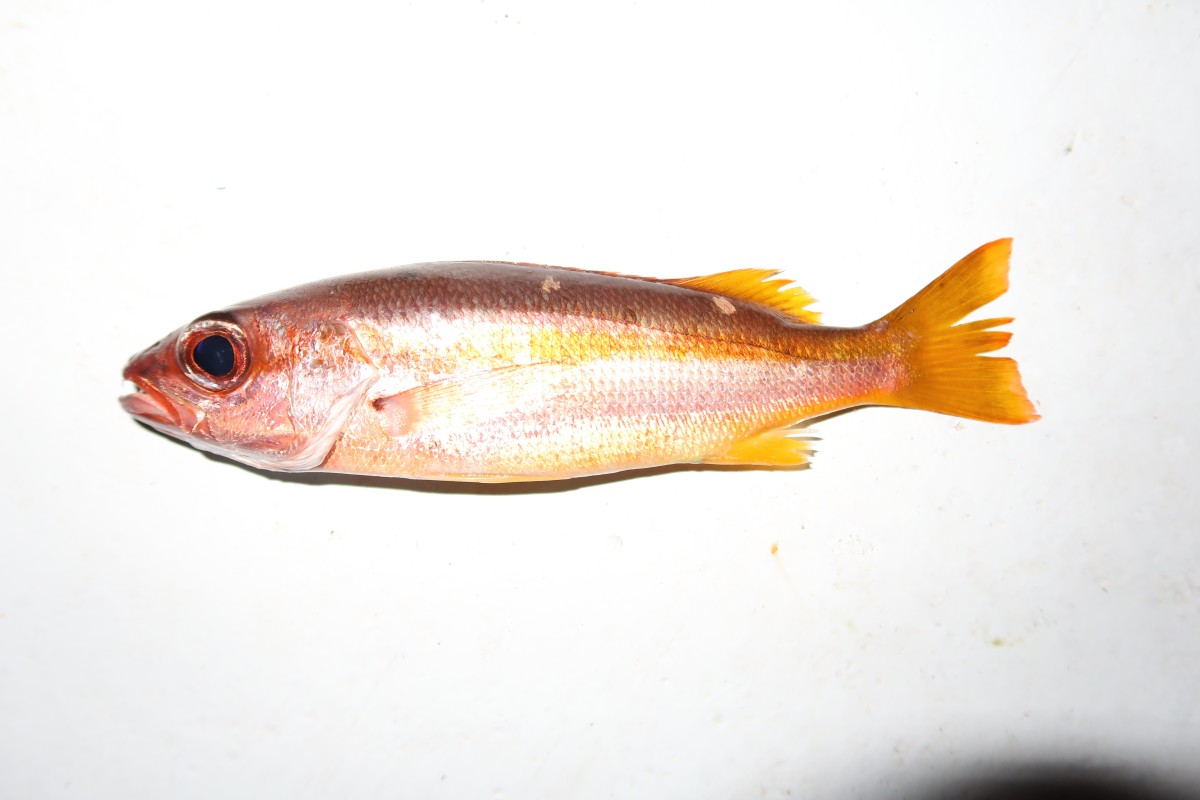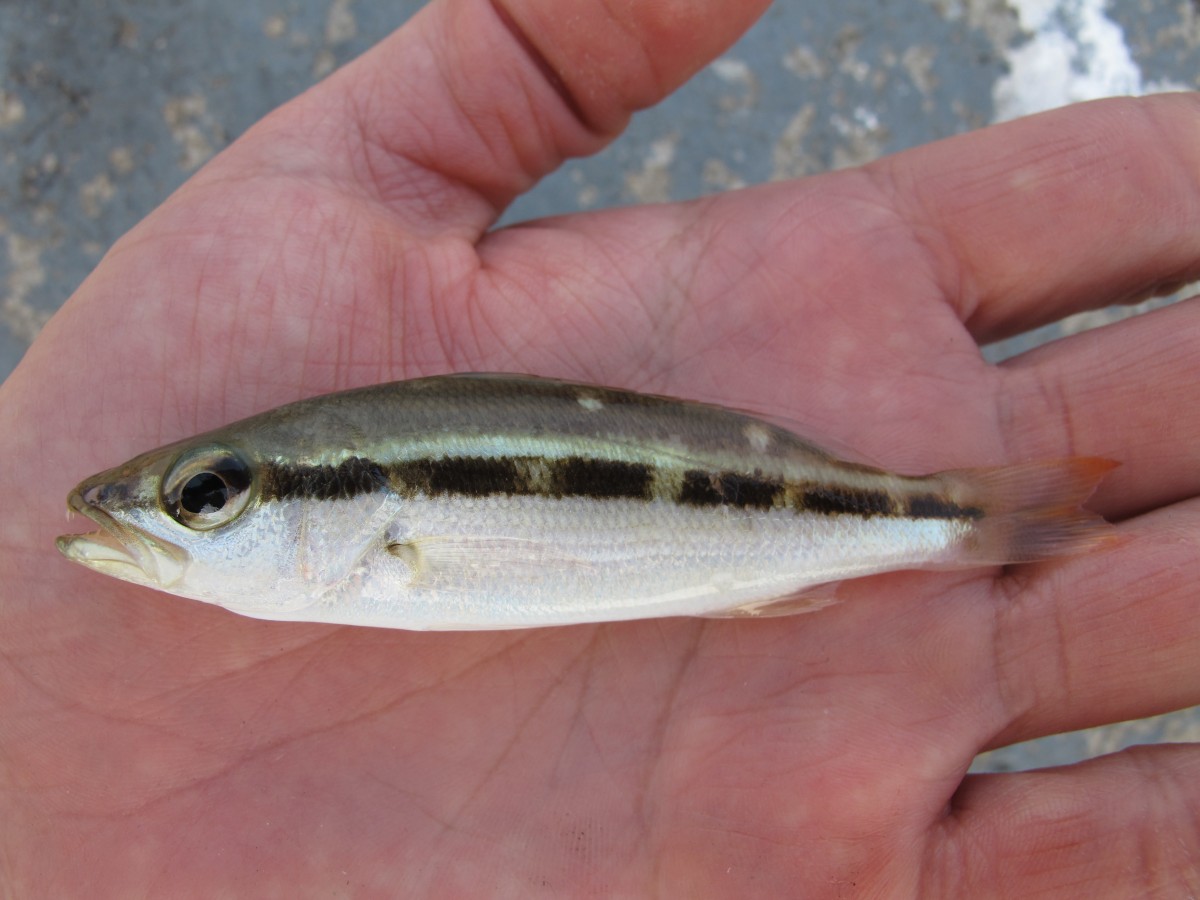Two-spot banded snapper
(Lutjanus biguttatus)

Classification
General data
Lutjanus biguttatus, the two-spot banded snapper or two-spot snapper, is a species of marine ray-finned fish, a snapper belonging to the family Lutjanidae. It is native to the western Pacific and eastern Indian Oceans.
Lutjanus biguttatus has a very slender, fusiform body with a snout which has a low, gently sloping profile. In the mouth the vomerine teeth are arranged in a triangular patch, with a posterior extension, or in a rhombus shape and there are no teeth on the tongue. The caudal fin is truncate. The dorsal fin contains 11 spines and 12 soft rays while the anal fin contains 3 spines and 8 soft rays.
This species has a greyish back, a wide horizontal white stripe running from the mouth to the caudal peduncle bordered on both sides by two reddish-brown stripes. There are two white spots on the back underneath the base of the dorsal fin.
The juveniles are largely white with a grey back, a dark brown longitudinal stripe along the lateral line and two indistinct white spots on the back.
The maximum standard length recorded for this species is 25 cm (9.8 in) although 15 cm (5.9 in) is more typical.
Lutjanus biguttatus is found in the Indo-Pacific region. It is distributed from the Maldives and Sri Lanka through the Andaman Sea and the Malay Archipelago east as far as the Solomon Islands, north as far as the Philippines and south to Australia, although there are records from farther east in Samoa, Fiji and the Caroline Islands. In Australia it has been recorded in Western Australia from Hibernia Reef to the Scott Reef, the Ashmore Reef in the Coral Sea and off the Cape York Peninsula in northern Queensland.
It is found at depths between 3 and 30 m (9.8 and 98.4 ft) on coral reefs.













